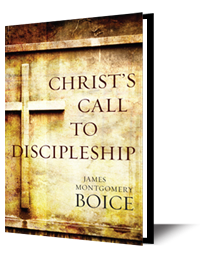
Do you want to be wise? If so, that is the way to be wise. Do you want to grow in knowledge? If so, that is the way to grow in knowledge. Read this book, beginning with Genesis, and go all the way through it to the end of Revelation. And as you read it, ask the Lord Jesus Christ, who speaks in it, to preach his own Easter sermon to your heart. I assure you that if you do that sincerely and prayerfully, the Bible will never be the same for you again. And in addition to that, you will never be the same, because you will find the Lord Jesus Christ everywhere in Scripture and discover that it will be your greatest delight in life to serve him.

In the eighth chapter of Acts, we have another suggestive text. Here Philip has been sent to the Ethiopian eunuch. When Philip finds him, he is reading from a manuscript he acquired in Jerusalem. It turns out that it is Isaiah, and the portion from which he is reading is Isaiah 53: “He was led like a sheep to the slaughter, and as a lamb before the shearer is silent, so he did not open his mouth. In his humiliation he was deprived of justice. Who can speak of his descendants? For his life was taken from the earth” (Acts 8:32, 33).

In the fourth chapter of Acts we have another of Peter’s sermons. Here he has been called before the Sanhedrin (the highest council of the ancient Jews), and he is defending himself and his teaching. We have a relatively short record of this sermon in verses 8-12, but in the midst of it we have another important Old Testament text applied to Jesus. It is Psalm 118:22, which Peter cites, saying, “The stone you builders rejected ...has become the capstone” (Acts 4:11).

Today we look at some of the texts Jesus must have used in his sermon, which we discussed yesterday. An obvious place to begin is with Peter's speech at Pentecost found in Acts 2. Peter used three texts in that message. The first was about Pentecost itself. It was from Joel—the prophecy that in the last days, God was going to pour out his Spirit upon all flesh (Joel 2:28-32; see Acts 2:17-21). Peter explained that Joel's words were being fulfilled right then in the sight and hearing of the people. Then he went on to preach about Jesus. To do that he drew on two more texts from the Old Testament.

One of the great accounts of the appearances of the Lord Jesus Christ to his disciples following the resurrection is his appearance to the two Emmaus disciples recorded in Luke 24. It is an interesting story for a number of reasons, and one is that Jesus preached a sermon on that occasion. It is referred to in verse 27: “And beginning with Moses and all the Prophets, he explained to them what was said in all the Scriptures concerning himself.”

















